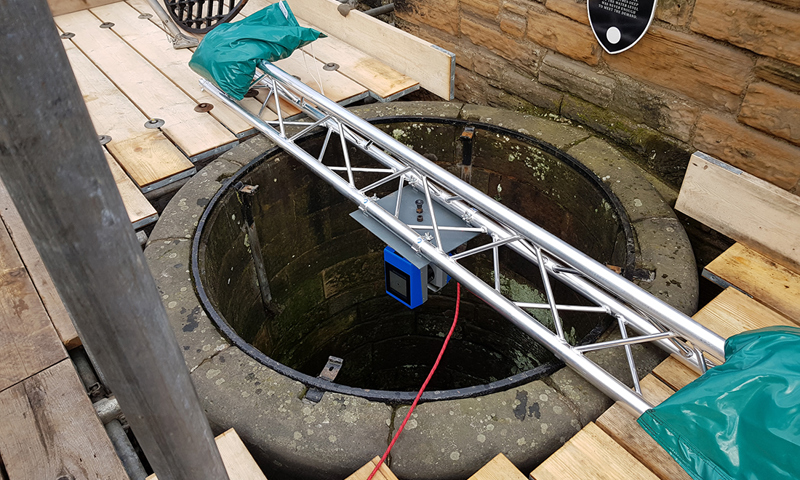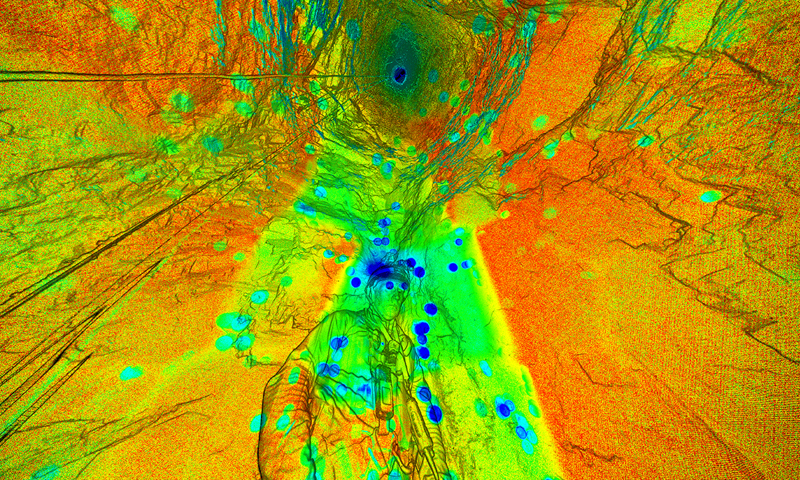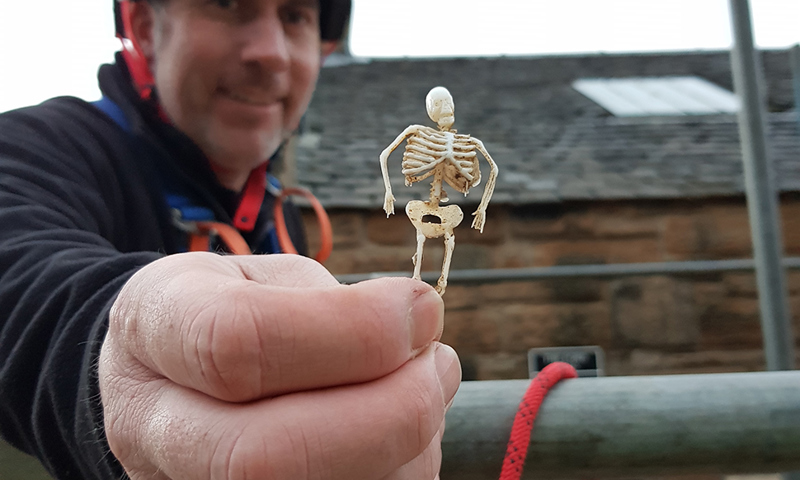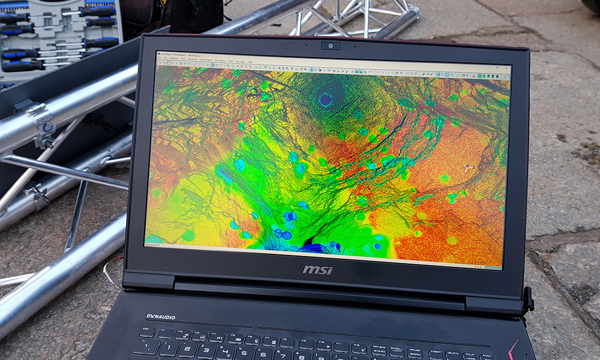One of the oldest and most hidden structures within Edinburgh Castle has been digitally documented by Historic Environment Scotland, revealing valuable insights into the 700 year old structure.
The Fore Well, the primary source of water for the medieval castle, was cut deep into the volcanic rock which towers over Edinburgh. It first appeared in historic records in 1314, when it was deliberately blocked by Robert the Bruce’s troops as part of wider destruction of the castle to prevent it being used against them, but is thought to be older. In its long history it has provided a vital lifeline to the castle’s residents throughout many sieges.

During the Lang Siege in 1573 it was completely blocked by falling masonry from the bombardment of David’s Tower and rendered unusable. It was subsequently cleared and extended in the following century and brought back into use. This later addition of a long straight stonework shaft is clearly visible in the new scans.
The well was first surveyed in 1912 by William Thomas Oldrieve, Architect for Scotland with the Office of Works. The detailed drawings of the well created by Oldrieve allow for comparison with the new 3D models demonstrating the accuracy of the hand measurements taken more than a century ago.
Alastair Rawlinson, Head of Digital Innovation and Learning with HES said;
“Our basic survey methodology would be recognised by William Oldrieve in 1912, but our laser scanning equipment lets us record the well in much more detail than was possible at that time.
“We build up a 3D model of the whole structure of the well, allowing for it to be viewed and explored by visitors.
“As part of our wider project to digitally document our estate, these scans will help us to monitor the condition of the castle and plan future conservation work. We’re also starting to make many of our 3D models available online, so that people can explore our sites in more detail and get access to areas that they normally wouldn’t.”
The 3D model of the Fore Well, is available to view on Sketchfab, a platform for viewing and sharing 3D models on computers, mobile devices and in virtual reality. This gives unprecedented access to an area of the castle that otherwise remains unseen.
The well is thought to draw rainwater from the surrounding rock and soil, with HES Works Manager Mark Soutar, who was lowered into the well to carry out the scanning, witnessing a rise in the water level as he worked in the well shaft, suggesting that it continues to function today.

Mark Soutar was lowered into the well
Despite retaining water today, the Fore Well is known to have struggled to supply the castle garrison at times, with water in short supply during sieges in 1640 and 1689, when the water was also reported to have been unfit for drinking.
Rachel Pickering, HES Cultural Resources Advisor welcomed the laser scanning and the insight provided, saying: “Very little survives of the medieval castle and it can be hard to understand or appreciate how the early castle would have looked.
Exploration such as this helps us to look at the castle in a new light and will continue to help us reconstruct and bring to life the lesser known aspects of the castle’s past.
The Fore Well has previously been a source for archaeological evidence relating to the castle, with finds including a complete cannonball and fragments of several others, a brass button thought to be from a military uniform and a halfpenny dated 1795. Finds during the recent scan provide more evidence of the castle’s career as Scotland’s most popular paid-for tourist attraction, with items including modern small change and a small, plastic toy skeleton being found.

Recent archaeological finds include this skeleton!
The detailed scans were carried out as part of the Rae Project – HES’ long-term project to digitally record in 3D all 336 sites in the care of Scottish Ministers.
More information on the project and techniques that HES uses for digital documentation can be found in the newly released Short Guide 13: Digital Documentation, which is available for free online.
About Historic Environment Scotland (HES)
- We are the lead public body charged with caring for, protecting and promoting the historic environment. We will lead on delivering Scotland’s first strategy for the historic environment, Our Place in Time.
- Historic Scotland is a sub brand of HES.
- View our press pack and keep up to date by registering for media release email alerts. If you wish to unsubscribe, please contact us.
Year of Young People 2018
The Year of Young People (YoYP 2018) will inspire Scotland through its young people aged 8 to 26, celebrating their achievements, valuing their contributions to communities and creating new opportunities for them to shine locally, nationally and globally. Over 200 young people throughout Scotland will become #YOYP2018 Ambassadors, ensuring their communities know about local opportunities to celebrate young people.
Follow Historic Environment Scotland
Twitter: @HistEnvScot | @welovehistory
Facebook: @HistoricEnvScotland | @VisitHistoricScotland
For further information, please contact:
Seumas Skinner
Historic Environment Scotland Media Office
Direct Line: 0131 668 8714
Mobile: 07776 243 809
seumas.skinner@hes.scot


